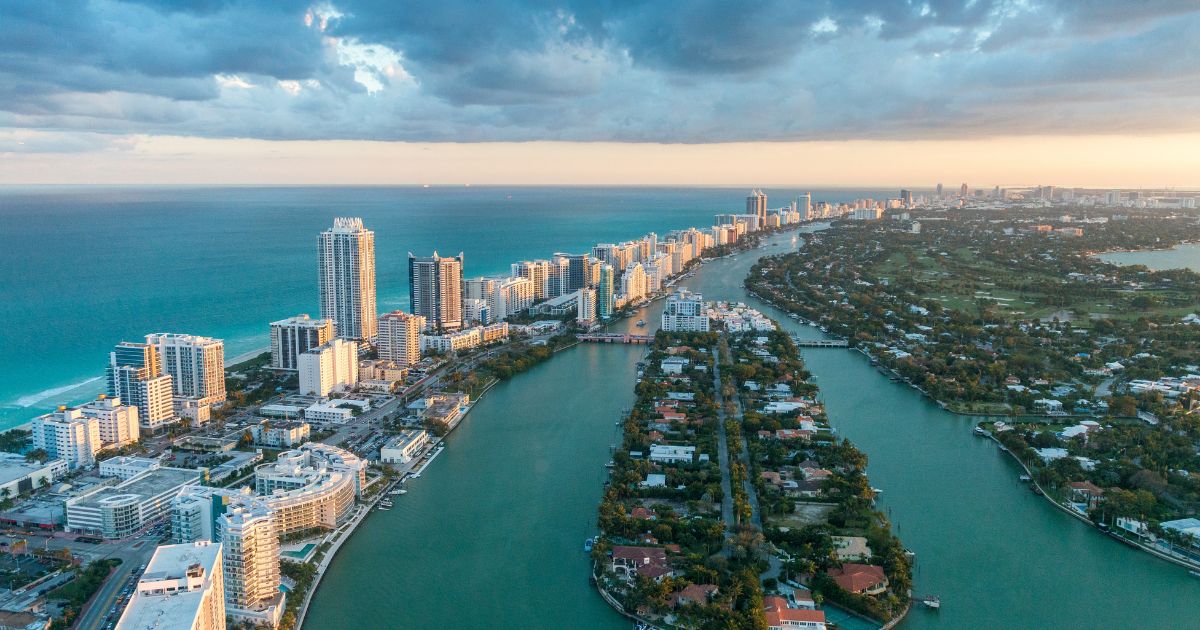The Bronx building collapse in recent months has shaken the community to its core, sparking urgent investigations and raising crucial questions about urban safety and infrastructure resilience. Situated in a bustling neighborhood, the incident unfolded tragically, affecting numerous lives and prompting immediate emergency responses. This article delves into the detailed investigation into Bronx building collapse, aiming to uncover the root causes, analyze the responses, and draw lessons for future safety measures.
Incident Overview
The Bronx building collapse occurred on a humid summer afternoon, taking place at the intersection of Brook Avenue and 142nd Street. The building, a three-story residential structure dating back to the early 20th century, crumbled suddenly, sending shockwaves through the neighborhood. Initial reports indicated structural issues compounded by recent heavy rainfall, which may have compromised the building’s foundation. Emergency services responded swiftly, rescuing several residents trapped in the rubble and transporting injured individuals to nearby hospitals.
The incident highlighted the urgent need for comprehensive urban planning and rigorous building inspections. The Bronx building collapse underscores the importance of proactive maintenance and structural assessments in aging urban environments, ensuring the safety of residents and minimizing risks associated with outdated infrastructure.
Key Players Involved
Following the Bronx building collapse, a coordinated effort involving local authorities, emergency responders, and community leaders swiftly unfolded. City officials, including the Department of Buildings and Fire Department, conducted joint operations to secure the site and assess the extent of the damage. Eyewitness accounts and survivor testimonies provided critical insights into the events leading up to the collapse, shedding light on potential warning signs and maintenance lapses.
Residents and advocacy groups voiced concerns over longstanding maintenance issues and the need for stricter regulatory oversight. The investigation into Bronx building collapse seeks to address these concerns, advocating for enhanced safety protocols and community engagement in urban development initiatives. By involving key stakeholders in the investigation process, authorities aim to foster transparency and accountability in safeguarding public welfare.
Causes and Triggers
Preliminary investigations into the Bronx building collapse point to several contributing factors, including structural deficiencies and environmental conditions. Aging infrastructure coupled with inadequate maintenance practices may have exacerbated vulnerabilities, leading to the sudden structural failure. Engineering assessments are underway to determine the precise cause of the collapse, examining load-bearing capacities and material integrity.
Heavy rainfall preceding the incident raised concerns over drainage systems and soil stability, factors that may have compromised the building’s structural integrity over time. The investigation into Bronx building collapse aims to identify systemic weaknesses in urban infrastructure management, advocating for proactive measures to mitigate risks associated with climate change and urbanization.
Legal and Regulatory Context
The Bronx building collapse has prompted scrutiny of existing building codes and regulatory frameworks governing urban construction. City officials are reviewing compliance records and past inspection reports to ascertain any lapses in enforcement or adherence to safety standards. Legislative measures may be proposed to strengthen building regulations and enhance oversight mechanisms, ensuring future developments prioritize structural integrity and public safety.
The incident underscores the need for robust regulatory reforms and stringent enforcement practices to prevent similar tragedies. By addressing regulatory gaps and promoting accountability within the construction industry, policymakers can instill confidence in urban residents and mitigate risks associated with aging infrastructure. The investigation into Bronx building collapse advocates for a holistic approach to urban planning, integrating legal reforms with community-driven initiatives to safeguard public welfare.
Initial Investigations
Immediate responses to the Bronx building collapse focused on securing the site and conducting preliminary assessments of surrounding structures. Structural engineers and safety inspectors collaborated to evaluate the stability of adjacent buildings and implement safety protocols. Evacuation orders were issued for neighboring residents as a precautionary measure, highlighting the proactive approach adopted by emergency responders in mitigating further risks.
Technical experts employed drone technology and 3D modeling to survey the collapse site, gathering spatial data essential for forensic investigations. The investigation into Bronx building collapse leverages technological advancements to reconstruct the sequence of events leading to the structural failure, facilitating evidence-based analysis and informed decision-making. By integrating innovative solutions with traditional investigative methods, authorities aim to streamline the investigation process and enhance urban disaster preparedness.
Human Impact
The Bronx building collapse resulted in multiple casualties and injuries, prompting an outpouring of support from the local community and humanitarian organizations. Emergency medical teams provided onsite triage and medical care to survivors, emphasizing the importance of swift response and coordinated efforts in crisis management. The incident underscored the resilience of frontline responders and the solidarity demonstrated by neighbors in times of adversity.
Survivor testimonies offered poignant accounts of resilience and survival, highlighting the human impact of infrastructure failures on vulnerable communities. The investigation into Bronx building collapse prioritizes the voices of affected individuals, advocating for trauma-informed responses and long-term support services. By addressing the psychological and emotional toll of disasters, authorities aim to foster community healing and resilience, ensuring survivors receive the care and resources needed to rebuild their lives.
Community Response
In the aftermath of the Bronx building collapse, community organizations mobilized to support displaced residents and coordinate relief efforts. Temporary shelters were established to accommodate affected families, offering essential supplies and social services. Local businesses and faith-based groups rallied together to provide meals and financial assistance, showcasing the strength of community solidarity in times of crisis.
Residents voiced concerns over urban development policies and advocated for greater community involvement in decision-making processes. The investigation into Bronx building collapse emphasizes the importance of community-driven solutions and grassroots activism in shaping resilient urban environments. By fostering partnerships between residents, nonprofits, and government agencies, authorities can strengthen social cohesion and empower communities to advocate for safer living conditions.
Media Coverage
The Bronx building collapse garnered significant media attention, with news outlets reporting real-time updates and public reactions to the unfolding crisis. Journalists played a crucial role in disseminating information and raising awareness about safety concerns in urban neighborhoods. Social media platforms served as forums for community engagement, enabling residents to share firsthand accounts and seek assistance during the emergency response phase.
Media coverage of the investigation into Bronx building collapse highlighted the complexities of urban planning and infrastructure management, prompting public discourse on regulatory reforms and emergency preparedness. Journalistic investigations uncovered systemic issues in building inspections and maintenance practices, prompting calls for transparency and accountability within the construction industry. By amplifying the voices of affected residents and holding stakeholders accountable, media outlets contributed to ongoing efforts to improve urban safety standards and protect public welfare.
Environmental Impact
The Bronx building collapse raised environmental concerns related to debris removal and waste management in urban settings. Cleanup crews worked diligently to clear the collapse site and mitigate potential hazards posed by structural debris. Environmental assessments monitored air and water quality in the vicinity, ensuring compliance with health and safety standards during recovery operations.
Efforts to minimize environmental impact included recycling materials and implementing sustainable practices in debris disposal. The investigation into Bronx building collapse advocates for eco-friendly solutions in disaster response and urban redevelopment, emphasizing the importance of environmental stewardship in resilient city planning. By integrating environmental considerations into recovery efforts, authorities can mitigate ecological disturbances and promote sustainable urban growth.
Economic Consequences
The Bronx building collapse had far-reaching economic implications for residents, businesses, and local government agencies. The cost of emergency response operations and infrastructure repairs strained municipal budgets, prompting calls for financial assistance and federal aid. Small businesses in the vicinity reported losses due to temporary closures and reduced foot traffic, exacerbating economic hardship in the aftermath of the disaster.
Recovery efforts focused on revitalizing the local economy and supporting affected businesses through grants and loan programs. The investigation into Bronx building collapse seeks to quantify economic losses and advocate for targeted interventions to stimulate economic recovery. By prioritizing job creation and business revitalization strategies, policymakers can mitigate long-term financial impacts and promote sustainable growth in impacted communities.
Lessons Learned
The Bronx building collapse offers valuable lessons for urban planners, policymakers, and community stakeholders invested in enhancing urban resilience. The incident underscored the importance of proactive maintenance and regular inspections in preserving the integrity of aging infrastructure. Regulatory reforms aimed at strengthening building codes and enforcement mechanisms can prevent future tragedies and safeguard public safety.
Community engagement emerged as a cornerstone of effective disaster preparedness, empowering residents to advocate for safer living conditions and participate in decision-making processes. The investigation into Bronx building collapse highlights the role of education and outreach in promoting awareness of urban safety standards and emergency protocols. By fostering a culture of resilience and accountability, cities can build stronger, more sustainable communities prepared to withstand environmental challenges and unforeseen disasters.
Also Read: Pacman 30th anniversary full screen
Government Response
Government agencies played a pivotal role in coordinating emergency response efforts and initiating the investigation into Bronx building collapse. City officials collaborated with state and federal partners to deploy resources and provide logistical support to affected communities. Legislative measures were introduced to strengthen building regulations and allocate funding for infrastructure improvements, reflecting a commitment to enhancing urban resilience and public safety.
Transparency and accountability were central to government responses, with officials engaging stakeholders in dialogue and providing regular updates on recovery efforts. The Bronx building collapse prompted a review of emergency response protocols and interagency coordination, aiming to streamline crisis management strategies and improve communication during future disasters. By learning from past experiences and adapting policies to evolving challenges, governments can build trust and resilience in communities impacted by urban emergencies.
Public Safety Measures
The Bronx building collapse prompted a reassessment of public safety measures and emergency preparedness protocols in urban environments. City officials collaborated with community leaders and emergency responders to enhance evacuation plans and establish communication networks for crisis management. Educational campaigns raised awareness of building safety standards and encouraged residents to report maintenance concerns promptly.
Technological advancements in disaster response, such as real-time monitoring systems and digital communication platforms, facilitated rapid response times and coordinated resource allocation. The investigation into Bronx building collapse advocates for the integration of innovative technologies in urban planning and emergency preparedness, ensuring cities are equipped to respond effectively to unforeseen events. By investing in public safety infrastructure and empowering residents with knowledge, authorities can mitigate risks and protect vulnerable populations from harm.
Collaborative Efforts
The Bronx building collapse underscored the importance of collaborative efforts between government agencies, nonprofit organizations, and community stakeholders in disaster response and recovery. Multidisciplinary teams worked together to assess structural integrity, provide medical assistance, and coordinate relief efforts for displaced residents. Volunteer organizations mobilized resources and manpower to support emergency responders and assist affected families during the crisis.
Cross-sector partnerships facilitated the dissemination of critical information and resources, enabling rapid response and comprehensive support services. The investigation into Bronx building collapse emphasizes the value of collective action in building resilient communities and fostering social cohesion. By fostering collaboration among diverse stakeholders, cities can leverage expertise and resources to mitigate disaster risks and enhance community preparedness.
Impact on Infrastructure Planning
The Bronx building collapse prompted a reevaluation of infrastructure planning and development practices to enhance urban resilience. City officials engaged urban planners and architects in redesigning public spaces and retrofitting existing structures to withstand environmental hazards. Sustainable building practices and green infrastructure initiatives were prioritized to promote environmental sustainability and mitigate climate-related risks.
The investigation into Bronx building collapse advocates for integrated urban planning approaches that prioritize safety, sustainability, and community well-being. By incorporating resilience principles into infrastructure design and development, cities can build adaptive infrastructure capable of withstanding future challenges. Public engagement in infrastructure planning processes fosters transparency and accountability, ensuring projects align with community needs and aspirations for a resilient urban future.
International Perspectives
The Bronx building collapse prompted global discussions on urban safety standards and disaster preparedness strategies. International experts shared insights on best practices for mitigating structural risks and responding to urban emergencies. Comparative analyses of similar incidents worldwide highlighted common challenges and innovative solutions adopted by cities to enhance resilience and protect public welfare.
Global collaborations facilitated knowledge exchange and technical assistance in disaster risk reduction and recovery efforts. The investigation into Bronx building collapse underscores the value of international cooperation in advancing urban resilience goals and fostering sustainable development practices. By learning from global experiences and adapting proven strategies to local contexts, cities can build safer, more sustainable environments capable of withstanding future uncertainties.
Future Outlook
The Bronx building collapse offers a compelling opportunity to envision a future where cities prioritize safety, sustainability, and community well-being in urban development. City officials and stakeholders are committed to implementing lessons learned from the incident to inform policy reforms and infrastructure investments. Enhanced building regulations, advanced technology applications, and community-driven initiatives will shape resilient cities prepared to confront emerging challenges.
The investigation into Bronx building collapse underscores the transformative potential of crisis as a catalyst for positive change in urban planning and governance. By investing in resilient infrastructure, fostering innovation in disaster preparedness, and promoting inclusive decision-making processes, cities can build equitable and sustainable urban environments. Public participation and partnership-building efforts will be pivotal in shaping a future where cities thrive amidst global uncertainties, ensuring a resilient legacy for generations to come.
Conclusion
In conclusion, the investigation into the Bronx building collapse has illuminated critical issues in urban infrastructure and emergency preparedness. It underscores the urgent need for proactive maintenance, stringent regulatory oversight, and community engagement to safeguard public safety. By learning from this tragedy and implementing reforms, cities can build more resilient communities equipped to mitigate risks and thrive in the face of future challenges. The lessons learned will shape policies and practices to ensure that tragedies like the Bronx building collapse are prevented, and that urban environments remain safe and secure for all residents.
FAQs
What were the main causes of the Bronx building collapse?
The collapse was primarily attributed to structural deficiencies exacerbated by environmental factors, including heavy rainfall and aging infrastructure.
How did the community respond to the Bronx building collapse?
The community rallied together, providing support to affected residents through shelters, donations, and volunteer efforts to aid in recovery and rebuilding.
What measures are being taken to prevent future incidents like the Bronx building collapse?
Authorities are enhancing building inspections, revising regulations, and promoting public awareness of safety protocols to ensure structural integrity and community safety.
How did media coverage impact the aftermath of the Bronx building collapse?
Media coverage played a crucial role in disseminating information, raising awareness about safety concerns, and advocating for accountability in urban development practices.
What lessons can other cities learn from the Bronx building collapse?
The incident underscores the importance of proactive infrastructure maintenance, robust emergency preparedness, and community engagement in fostering resilient urban environments.









